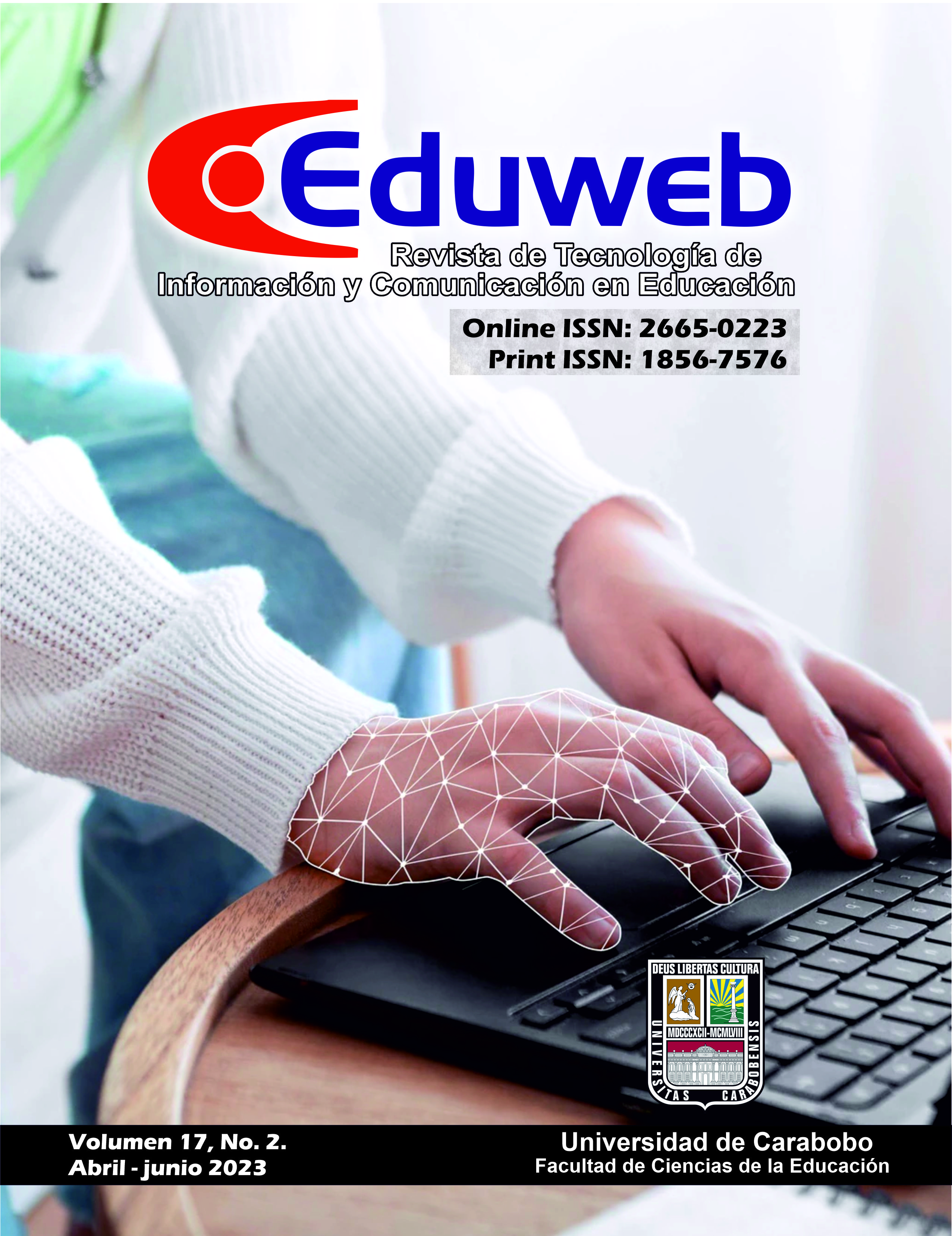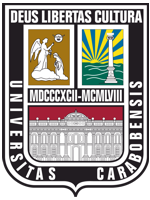Analysis of the effectiveness of the implementation of digital technologies in the educational process of medical HEIs: challenges, optimization
DOI:
https://doi.org/10.46502/issn.1856-7576/2023.17.02.3Palabras clave:
higher medical education, digitalization, challenges, prospects.Resumen
The COVID-19 pandemic has led to the more intensive use of digital technologies in higher medical education. The purpose of the study was to analyze the effectiveness of the implementation of digital technologies in the educational process of Ukrainian medical universities, to identify the current challenges e-learning faces, and to propose potential ways of optimization. General scientific methods (for example analysis, synthesis) specific pedagogical methods (specification, abstraction, comparison forecasting) were used for the research. The results outline the main advantages of using digital technologies in the medical higher school system. Attention is also drawn to the main challenges that have a certain negative impact on the educational process. Among the latter, problems with the practical training of future doctors were noted since distance learning does not provide an opportunity to fully implement skills building component. The results also highlight possible ways to solve the problems of using digital technologies in medical higher education institutions. It is proposed to introduce to use not only distance learning technologies, but to combine them with the traditional approach and independent learning. It is emphasized about further studies, as empirical measurements of the effectiveness of distance education in the medical field. And, this effectivenessstill needs to be ultimately proven.
Citas
Ali, S. (2022). The effectiveness of immersive technologies for future professional education. Futurity Education, 2(2), 13–21. https://doi.org/10.57125/FED/2022.10.11.25
Bakhmat, N., Kruty, K., Tolchieva, H., & Pushkarova, T. (2022). Modernization of future teachers’ professional training: on the role of immersive technologies. Futurity Education, 2(1), 28–37. https://doi.org/10.57125/FED/2022.10.11.22
Bader, S., & Mereniuk, K. (2022). Digital literacy of future teachers in the realities of large-scale military aggression (Ukrainian experience). Futurity Education, 2(3), 43–54. doi: https://doi.org/10.57125/FED/2022.10.11.33
Chen, K. K., & Banerjee, A. (2021). The digital transformation of medical education. Obstetric Medicine, 14(1), 3. doi: https://doi.org/10.1177/1753495x211007794
Efremenko, L. V., Golovachev , V. S., Grigoryeva , A. S., Tretyakov, A. L., & Chertakova, E. M. (2020). Tecnologías de educación ambiental. Revista Eduweb, 14(2), 265–279. Recuperado a partir de https://revistaeduweb.org/index.php/eduweb/article/view/33
European Commission. (2020, March 10). A New Industrial Strategy for Europe. Retrieved from https://eur-lex.europa.eu/legal-content/EN/TXT/?qid=1593086905382&uri=CELEX%3A52020DC0102
Jacob, S. (2020). The New Face of Medicine –care flow strategies developed during COVID. International Journal of Integrative Pediatrics and Environmental Medicine, 5. doi: https://doi.org/10.36013/ijipem.v5i1.83
Jarva, E., Oikarinen, A., Andersson, J., Tuomikoski, A., Kääriäinen, M., Meriläinen, M., & Mikkonen, K. (2022). Healthcare professionals' perceptions of digital health competence: A qualitative descriptive study. Nursing Open, 9(2), 1379–1393. doi: https://doi.org/10.1002/nop2.1184
Jena, B. M., Gupta, S. L., & Mishra, N. (2021). Effectiveness of online learning and face-to-face teaching pedagogy. In Transforming higher education through digitalization (p. 21–43). Boca Raton: CRC Press. doi: https://doi.org/10.1201/9781003132097-2
Jenkins, T. M., Underman, K., Vinson, A. H., Olsen, L. D., & E. Hirshfield, L. (2021). The Resurgence of Medical Education in Sociology: A Return to Our Roots and an Agenda for the Future. Journal of Health and Social Behavior, 62(3), 255–270. doi: https://doi.org/10.1177/0022146521996275
Laufer, M., Leiser, A., Deacon, B., Perrin de Brichambaut, P., Fecher, B., Kobsda, C., & Hesse, F. (2021). Digital higher education: a divider or bridge builder? Leadership perspectives on edtech in a COVID-19 reality. International Journal of Educational Technology in Higher Education, 18(1), 1-17. doi: https://doi.org/10.1186/s41239-021-00287-6
Ministry of Education and Science of Ukraine (2022, April 15). The Strategy for the Development of Higher Education in Ukraine for 2022-2032. Retrieved from https://mon.gov.ua/ua/news/opublikovano-strategiyu-rozvitku-vishoyi-osviti-v-ukrayini-na-2022-2032-roki
Mishra, K., Boland, M. V., & Woreta, F. A. (2020). Incorporating a virtual curriculum into ophthalmology education in the coronavirus disease-2019 era. Current Opinion in Ophthalmology, 31(5), 380–385. doi: https://doi.org/10.1097/icu.0000000000000681
Motte-Signoret, E., Labbé, A., Benoist, G., Linglart, A., Gajdos, V., & Lapillonne, A. (2021). Perception of medical education by learners and teachers during the COVID-19 pandemic: A cross-sectional survey of online teaching. Medical Education Online, 26(1), 1919042. doi: https://doi.org/10.1080/10872981.2021.1919042
Rani, G., Kaur, P., & Sharma, T. (2022). Digital education challenges and opportunities. Journal of Engineering Education Transformations, 35(4), 121–128. doi: https://doi.org/10.16920/jeet/2022/v35i4/22111
Radziievska, I., Trepet, G., Radzikhovska, N., Sukhostavets, N., Yuryk, O., & Saienko, V. (2022). Modern achievements and prospects for the development of higher medical education: Ukrainian realities. Amazonia Investiga, 11(55), 114-12. https://doi.org/10.34069/AI/2022.55.07.12
Raney, J., Testa, A., Jackson, D. B., Ganson, K. T., & Nagata, J. (2022). Associations between adverse childhood experiences, adolescent screen time and physical activity during the COVID-19 pandemic. Academic Pediatrics, 22(8), 1294–1299. doi: https://doi.org/10.1016/j.acap.2022.07.007
Ottinger, M. E., Farley, L. J., Harding, J. P., Harry, L. A., Cardella, J. A., & Shukla, A. J. (2021). Virtual medical student education and recruitment during the COVID-19 pandemic. Seminars in Vascular Surgery, 34(3), 132–138. doi: https://doi.org/10.1053/j.semvascsurg.2021.06.001
Safonov, Y., Usyk, V., & Bazhenkov, I. (2022). Digital transformations of education policy. Baltic Journal of Economic Studies, 8(2), 127–136. doi: https://doi.org/10.30525/2256-0742/2022-8-2-127-136
Salvati, A. (2019). La educación médica en la era digital. Revista Argentina de Cardiologia, 87(3), 236. doi: http://dx.doi.org/10.7775/rac.es.v87.i3.15394
Sorg, H., Ehlers, J. P., & Sorg, C. G. G. (2022). Digitalization in medicine: Are german medical students well prepared for the future? International Journal of Environmental Research and Public Health, 19(14), 8308. doi: https://doi.org/10.3390/ijerph19148308
Succar, T., Beaver, H. A., & Lee, A. G. (2021). Impact of COVID-19 pandemic on ophthalmology medical student teaching: educational innovations, challenges, and future directions. Survey of Ophthalmology 67(1), 217-225. doi: https://doi.org/10.1016/j.survophthal.2021.03.011
Tsekhmister, Y. V., Konovalova, T., Tsekhmister, B. Y., Agrawal, A., & Ghosh, D. (2021). Evaluation of Virtual Reality Technology and Online Teaching System for Medical Students in Ukraine During COVID-19 Pandemic. International Journal of Emerging Technologies in Learning (iJET), 16(23), 127–139. doi: https://doi.org/10.3991/ijet.v16i23.26099
Zheltukhina, M. R., Kutepov, M. M., Kutepova, L. I., Bulaeva, M. N., & Lapshova, A. V. (2021). Desarrollo de la competencia mediática de los estudiantes en el contexto de la educación digital. Revista Eduweb, 15(1), 29–38. https://doi.org/10.46502/issn.1856-7576/2021.15.01.3
Descargas
Publicado
Cómo citar
Número
Sección
Licencia
Derechos de autor 2023 Ihor Vasianovych, Olha Тatarina

Esta obra está bajo una licencia internacional Creative Commons Atribución 4.0.















